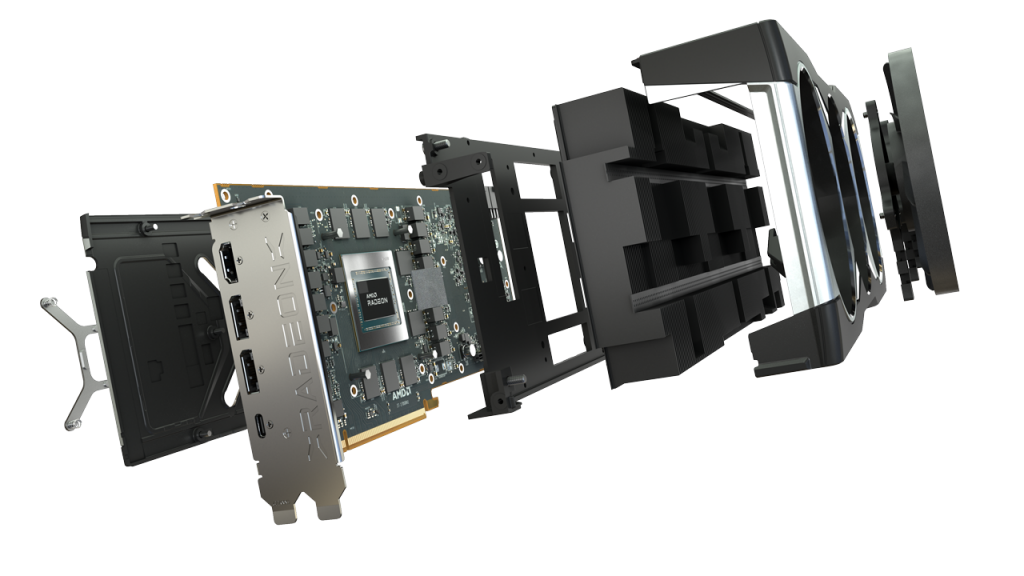AMD เปิดตัว AMD Radeon™ RX 6000 Series กราฟิกการ์ดสำหรับการเล่นเกมยุคใหม่
AMD เปิดตัว AMD Radeon™ RX 6000 Series
กราฟิกการ์ดสำหรับการเล่นเกมยุคใหม่
นำเสนอประสิทธิภาพการแสดงผลความละเอียดระดับ 4K บนการเล่นเกม AAA
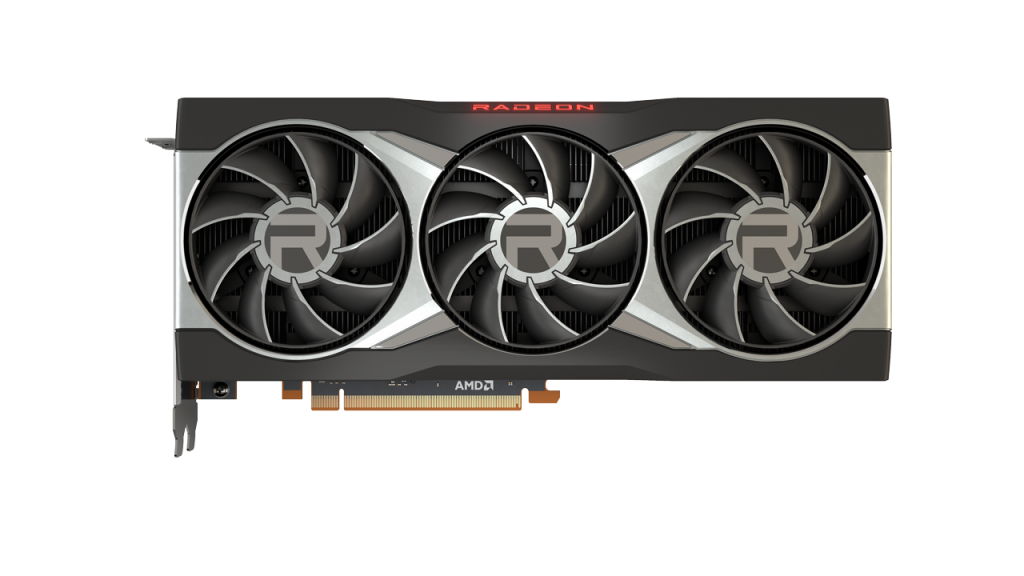 มาพร้อมสถาปัตยกรรมเกมมิ่ง AMD RDNA™ 2 ที่ล้ำสมัย นำเสนอประสิทธิภาพการประมวลผลที่สูงขึ้นถึง 2 เท่า[1] และประสิทธิภาพต่อวัตต์ที่สูงขึ้นถึง 54% เมื่อนำไปเปรียบเทียบกับกราฟิกการ์ดที่ใช้สถาปัตยกรรม AMD RDNA™ รุ่นก่อนหน้า[2] –
มาพร้อมสถาปัตยกรรมเกมมิ่ง AMD RDNA™ 2 ที่ล้ำสมัย นำเสนอประสิทธิภาพการประมวลผลที่สูงขึ้นถึง 2 เท่า[1] และประสิทธิภาพต่อวัตต์ที่สูงขึ้นถึง 54% เมื่อนำไปเปรียบเทียบกับกราฟิกการ์ดที่ใช้สถาปัตยกรรม AMD RDNA™ รุ่นก่อนหน้า[2] –
นำเสนอกราฟิกการ์ดเรือธง AMD Radeon™ RX 6900 XT รุ่นใหม่ สุดยอดกราฟิกการ์ดระดับ 4K ที่เป็นกราฟิกการ์ดสำหรับการเล่นเกมที่เร็วที่สุดเท่าที่เคยมีมาของ AMD –
กรุงเทพฯ, ประเทศไทย – 29 ตุลาคม 2563 – AMD (NASDAQ: AMD) เปิดตัวกราฟิกการ์ด AMD Radeon™ RX 6000 Series ส่งมอบประสิทธิภาพการประมวลผลอันทรงพลัง การแสดงผลสมจริงน่าทึ่ง และฟีเจอร์ที่ “ต้องมี” ซึ่งจะสร้างมาตรฐานใหม่สำหรับผู้ที่ชื่นชอบการเล่นเกมบนคอมพิวเตอร์ กราฟิกการ์ด AMD Radeon™ RX 6000 Series ที่เป็นที่สนใจของเหล่าเกมเมอร์ทั่วโลกนั้น ประกอบด้วย กราฟิกการ์ดรุ่น AMD Radeon™ RX 6800 และ AMD Radeon™ RX 6800 XT รวมไปถึงกราฟิกการ์ดเรือธงใหม่ AMD Radeon™ RX 6900 XT ซึ่งเป็นกราฟิกการ์ดสำหรับ การเล่นเกมที่เร็วที่สุดที่ AMD เคยพัฒนามา
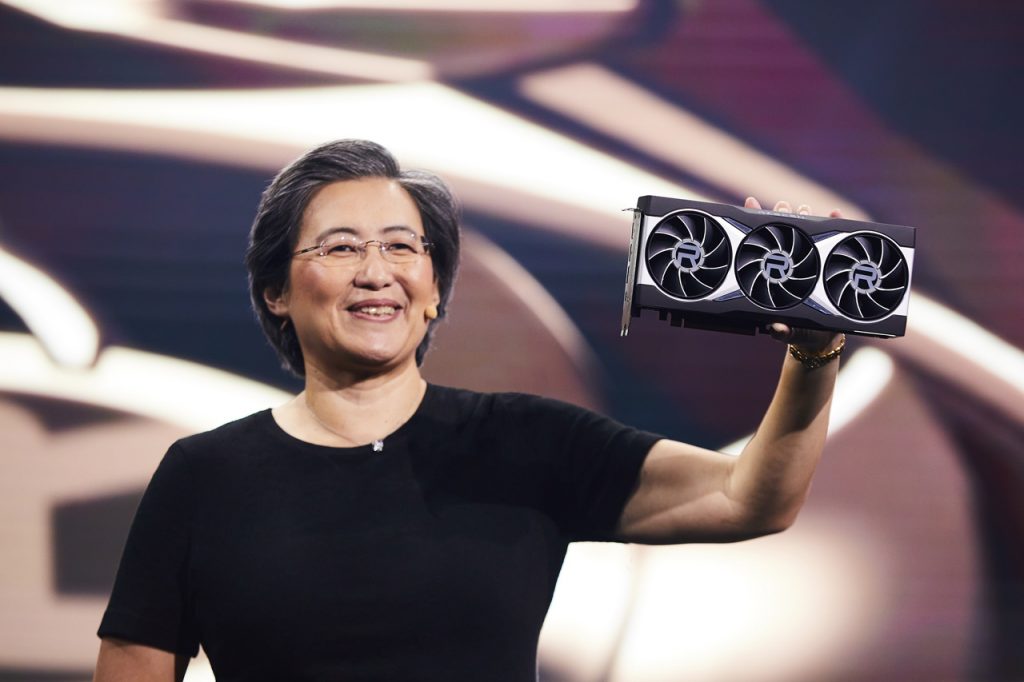 กราฟิกการ์ด AMD Radeon™ RX 6000 Series สร้างขึ้นบนสถาปัตยกรรมเกมมิ่ง AMD RDNA™ 2 ที่ล้ำสมัย เป็นรากฐานใหม่ให้กับเทคโนโลยีในอนาคต ประกอบด้วยเครื่องเกมคอนโซล คอมพิวเตอร์ แล็ปท็อป และอุปกรณ์พกพา ออกแบบมาเพื่อส่งมอบการผสมผสานที่ลงตัวระหว่าง ประสิทธิภาพการประมวลผลและการใช้พลังงาน โดยให้ประสิทธิภาพด้านประมวลผลผ่านการเล่นเกม ด้วยกราฟิกการ์ด AMD Radeon™ RX 6900 XT สูงกว่าถึง 2 เท่า เมื่อนำไปเปรียบเทียบกับกราฟิกการ์ด AMD Radeon™ RX 5700 XT ที่ใช้สถาปัตยกรรมรุ่นก่อนหน้า AMD RDNA™1 และประสิทธิภาพต่อวัตต์ที่เพิ่มขึ้นถึง 54% เมื่อนำกราฟิกการ์ด AMD Radeon™ RX 6800 XT มาเปรียบเทียบกราฟิกการ์ด AMD Radeon™ RX 5700 XT ที่ใช้สถาปัตยกรรมรุ่นก่อนอย่าง AMD RDNA™ ซึ่งใช้เทคโนโลยีการผลิต 7nm เช่นเดียวกัน2
กราฟิกการ์ด AMD Radeon™ RX 6000 Series สร้างขึ้นบนสถาปัตยกรรมเกมมิ่ง AMD RDNA™ 2 ที่ล้ำสมัย เป็นรากฐานใหม่ให้กับเทคโนโลยีในอนาคต ประกอบด้วยเครื่องเกมคอนโซล คอมพิวเตอร์ แล็ปท็อป และอุปกรณ์พกพา ออกแบบมาเพื่อส่งมอบการผสมผสานที่ลงตัวระหว่าง ประสิทธิภาพการประมวลผลและการใช้พลังงาน โดยให้ประสิทธิภาพด้านประมวลผลผ่านการเล่นเกม ด้วยกราฟิกการ์ด AMD Radeon™ RX 6900 XT สูงกว่าถึง 2 เท่า เมื่อนำไปเปรียบเทียบกับกราฟิกการ์ด AMD Radeon™ RX 5700 XT ที่ใช้สถาปัตยกรรมรุ่นก่อนหน้า AMD RDNA™1 และประสิทธิภาพต่อวัตต์ที่เพิ่มขึ้นถึง 54% เมื่อนำกราฟิกการ์ด AMD Radeon™ RX 6800 XT มาเปรียบเทียบกราฟิกการ์ด AMD Radeon™ RX 5700 XT ที่ใช้สถาปัตยกรรมรุ่นก่อนอย่าง AMD RDNA™ ซึ่งใช้เทคโนโลยีการผลิต 7nm เช่นเดียวกัน2
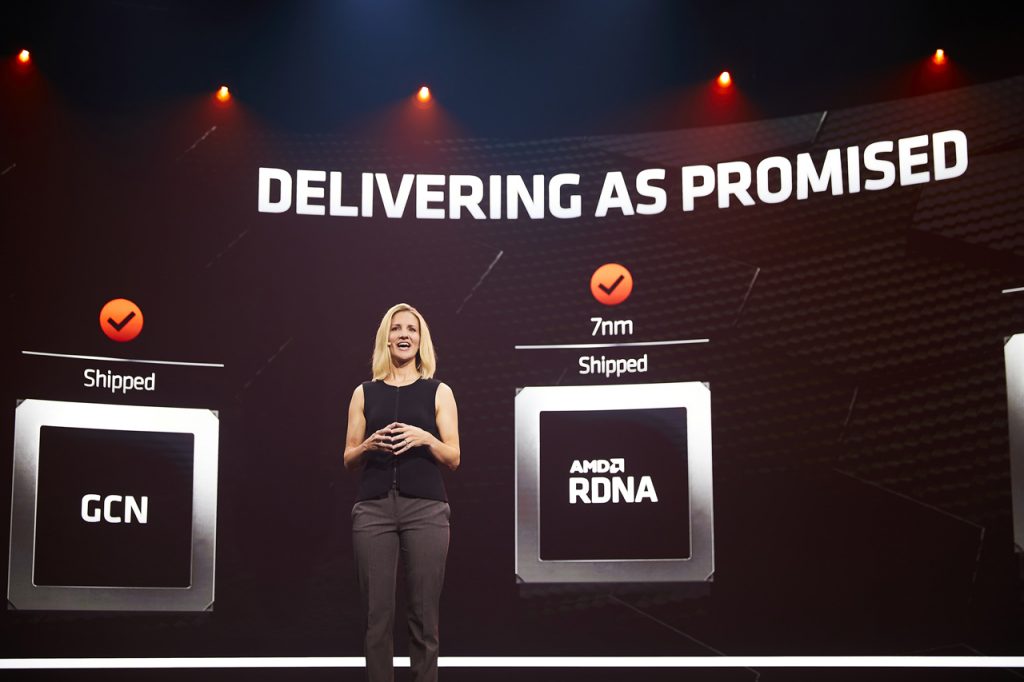 สถาปัตยกรรมเกมมิ่ง AMD RDNA™ 2 นำเสนอนวัตกรรมมากมาย รวมไปถึงการนำเทคนิค การประหยัดพลังงานขั้นสูงมาประยุกต์ใช้กับหน่วยประมวลผลประสิทธิภาพสูง ทำให้สามารถพัฒนา ประสิทธิภาพการใช้พลังงานได้ดีขึ้นถึง 30% ต่อหนึ่งไซเคิลต่อหน่วยประมวลผล[3] และใช้ประโยชน์ จากการออกแบบระบบความเร็วสูงเพื่อเพิ่มความถี่สูงสุดถึง 30% ในการใช้พลังงานระดับเดียวกัน[4] นอกจากนี้ยังมีเทคโนโลยีใหม่ AMD Infinity Cache ที่ให้แบนด์วิธท์ต่อวัตต์เพิ่มขึ้นถึง 2.4 เท่า เมื่อนำไปเทียบกับการออกแบบบนสถาปัตยกรรม AMD RDNA™ GDDR6[5]
สถาปัตยกรรมเกมมิ่ง AMD RDNA™ 2 นำเสนอนวัตกรรมมากมาย รวมไปถึงการนำเทคนิค การประหยัดพลังงานขั้นสูงมาประยุกต์ใช้กับหน่วยประมวลผลประสิทธิภาพสูง ทำให้สามารถพัฒนา ประสิทธิภาพการใช้พลังงานได้ดีขึ้นถึง 30% ต่อหนึ่งไซเคิลต่อหน่วยประมวลผล[3] และใช้ประโยชน์ จากการออกแบบระบบความเร็วสูงเพื่อเพิ่มความถี่สูงสุดถึง 30% ในการใช้พลังงานระดับเดียวกัน[4] นอกจากนี้ยังมีเทคโนโลยีใหม่ AMD Infinity Cache ที่ให้แบนด์วิธท์ต่อวัตต์เพิ่มขึ้นถึง 2.4 เท่า เมื่อนำไปเทียบกับการออกแบบบนสถาปัตยกรรม AMD RDNA™ GDDR6[5]
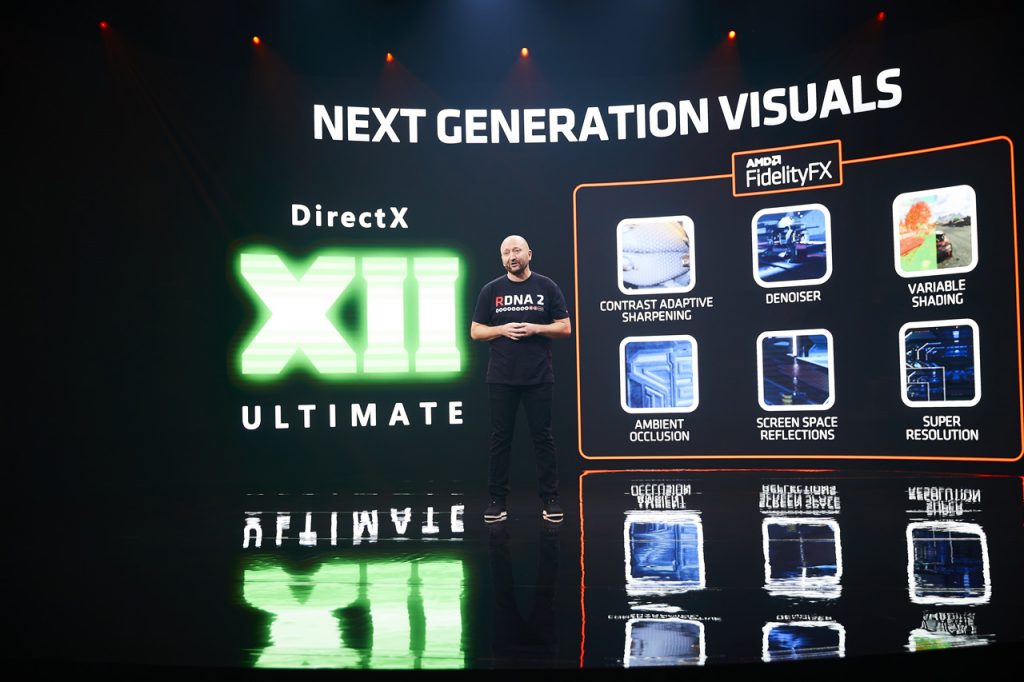 สก็อตต์ เฮอร์เคลมัน รองประธานและผู้จัดการทั่วไปกลุ่มผลิตภัณฑ์กราฟิก บริษัท AMD กล่าวว่า “การเปิดตัวผลิตภัณฑ์กราฟิกการ์ดในวันนี้นับเป็นปีที่ยอดเยี่ยมที่สุดของการวิจัยและพัฒนาที่มุ่งเน้นการนำเสนอกราฟิกการ์ด AMD Radeon ที่ดีที่สุดสู่ตลาดเกมเมอร์ระดับฮาร์ดคอร์ และแสดงให้เห็นถึง พัฒนาการที่สำคัญของอุตสาหกรรมคอมพิวเตอร์เพื่อการเล่นเกม กราฟิกการ์ดใหม่ AMD Radeon RX 6800, RX 6800 XT และ RX 6900 XT จะส่งมอบประสิทธิภาพการแสดงผลที่ยอดเยี่ยมระดับโลก ด้วยความคมชัดระดับ 4K และ 1440p บนการเล่นเกม AAA เป็นการยกระดับใหม่ของประสบการณ์ การแสดงผลที่สมจริงอันน่าทึ่ง และฟีเจอร์ที่ยอดเยี่ยมต่าง ๆ เพื่อส่งมอบประสบการณ์การเล่นเกม ที่ดีที่สุดให้กับทุกคน ผมรู้สึกตื่นเต้นเป็นอย่างมากที่เกมเมอร์ทั่วโลกจะได้สัมผัสกราฟิกการ์ดใหม่นี้ ด้วยมือของพวกเขาเอง”
สก็อตต์ เฮอร์เคลมัน รองประธานและผู้จัดการทั่วไปกลุ่มผลิตภัณฑ์กราฟิก บริษัท AMD กล่าวว่า “การเปิดตัวผลิตภัณฑ์กราฟิกการ์ดในวันนี้นับเป็นปีที่ยอดเยี่ยมที่สุดของการวิจัยและพัฒนาที่มุ่งเน้นการนำเสนอกราฟิกการ์ด AMD Radeon ที่ดีที่สุดสู่ตลาดเกมเมอร์ระดับฮาร์ดคอร์ และแสดงให้เห็นถึง พัฒนาการที่สำคัญของอุตสาหกรรมคอมพิวเตอร์เพื่อการเล่นเกม กราฟิกการ์ดใหม่ AMD Radeon RX 6800, RX 6800 XT และ RX 6900 XT จะส่งมอบประสิทธิภาพการแสดงผลที่ยอดเยี่ยมระดับโลก ด้วยความคมชัดระดับ 4K และ 1440p บนการเล่นเกม AAA เป็นการยกระดับใหม่ของประสบการณ์ การแสดงผลที่สมจริงอันน่าทึ่ง และฟีเจอร์ที่ยอดเยี่ยมต่าง ๆ เพื่อส่งมอบประสบการณ์การเล่นเกม ที่ดีที่สุดให้กับทุกคน ผมรู้สึกตื่นเต้นเป็นอย่างมากที่เกมเมอร์ทั่วโลกจะได้สัมผัสกราฟิกการ์ดใหม่นี้ ด้วยมือของพวกเขาเอง”
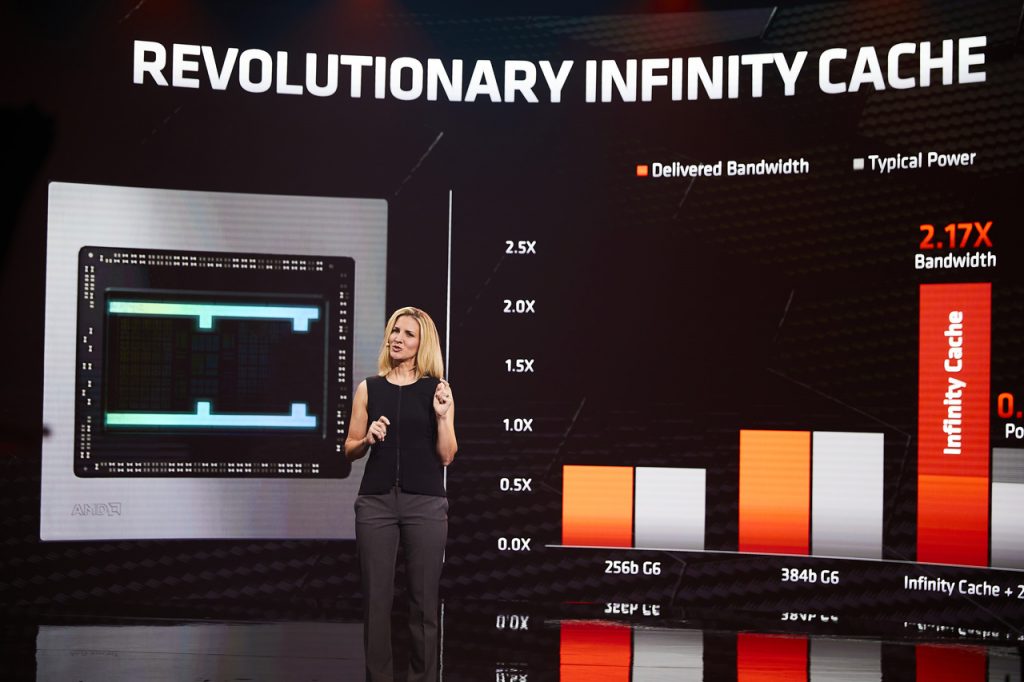 ประสิทธิภาพการประมวลผลอันทรงพลัง การแสดงผลที่สมจริง และประสบการณ์การเล่นเกมที่น่าทึ่ง
ประสิทธิภาพการประมวลผลอันทรงพลัง การแสดงผลที่สมจริง และประสบการณ์การเล่นเกมที่น่าทึ่ง
กราฟิกการ์ด AMD Radeon™ RX 6000 Series รองรับเทคโนโลยี PCIe® 4.0 แบนด์วิดธ์สูงและฟีเจอร์หน่วยความ GDDR6 ขนาด 16GB เพื่อรองรับเวิร์คโหลดงานระดับ 4K ซึ่งเป็นที่ต้องการในปัจจุบันและอนาคต โดยมีฟีเจอร์ที่สำคัญประกอบด้วย:
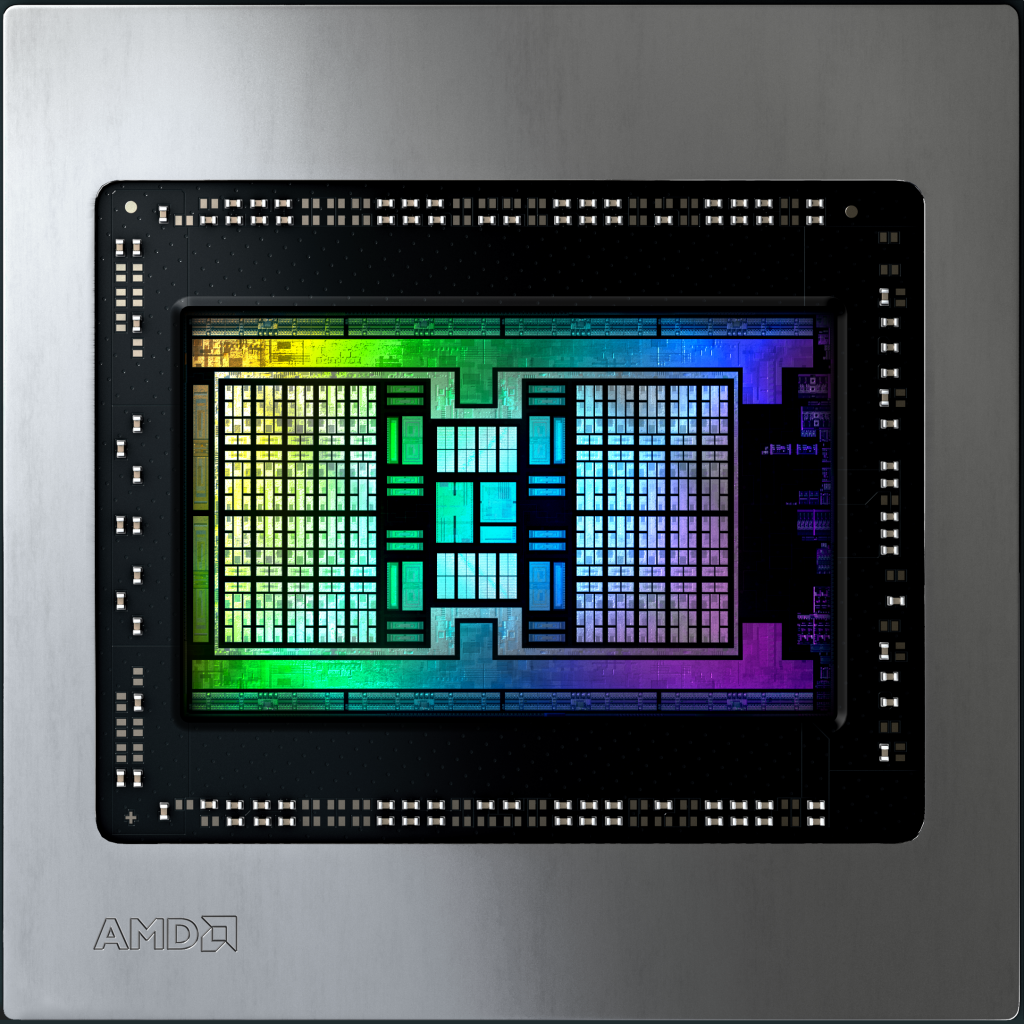 ประสิทธิภาพการประมวลผลอันทรงพลัง
ประสิทธิภาพการประมวลผลอันทรงพลัง
- AMD Infinity Cache – แคชข้อมูลประสิทธิภาพสูงซึ่งเหมาะสำหรับการเล่นเกมระดับ 4K และ 1440p และเปิดการใช้งานการแสดงผลในระดับสูงสุด แคชแบบ on-die ขนาด 128 MB จะช่วยลดค่าความหน่วง[6] และการใช้พลังงานได้เป็นอย่างมาก[7] ทำให้ภาพรวมของประสิทธิภาพ ในการเล่นเกมสูงกว่าการออกแบบสถาปัตยกรรมในแบบดั้งเดิม
- AMD Smart Access Memory[8] – ฟีเจอร์พิเศษสำหรับผลิตภัณฑ์โปรเซสเซอร์ AMD Ryzen™ 5000 Series, เมนบอร์ด AMD B550 และ X570 และกราฟิกการ์ด AMD Radeon™ RX 6000 Series ช่วยให้โปรเซสเซอร์ AMD Ryzen™ เข้าถึงหน่วยความจำความเร็วสูง GDDR6 ได้มีประสิทธิภาพดียิ่งขึ้น เร่งการประมวลผลของโปรเซสเซอร์ และเพิ่มประสิทธิภาพ การประมวลผลสูงสุดถึง 13% เมื่อนำกราฟิกการ์ด AMD Radeon RX 6800 XT มาทดสอบกับเกม Forza Horizon 4 ที่ความละเอียดระดับ 4K เมื่อใช้ร่วมกันกับฟีเจอร์ Rage Mode ฟีเจอร์การตั้งค่าโอเวอร์คล็อกใหม่เพียงแค่คลิกเดียว[9],10
- สร้างขึ้นสำหรับเคสมาตรฐาน – ด้วยความยาว 267mm และขั้วต่อพลังงานขนาดมาตรฐาน 8 พิน จำนวน 2×8 ออกแบบมาเพื่อใช้งานร่วมกันกับเครื่องจ่ายไฟขนาด 650W-750W ที่มีอยู่ของผู้ใช้งาน ทำให้เหล่าเกมเมอร์สามารถอัพเกรดคอมพิวเตอร์ตั้งแต่ขนาดใหญ่ ไปจนถึงขนาดเล็กได้โดยไม่มีค่าใช้จ่ายเพิ่มเติม
การแสดงผลที่สมจริง และมีความเที่ยงตรงสูง
- รองรับ DirectX® 12 Ultimate – นำเสนอประสิทธิภาพการผสมผสานอันทรงพลังของเทคโนโลยี raytracing, การประมวลผล และ rasterized effects เช่น DirectX® Raytracing และ Variable Rate Shading เพื่อยกระดับเกมต่าง ๆ ไปอีกระดับให้มีความสมจริงมากยิ่งขึ้น
- DirectX® Raytracing (DXR) – เพิ่มฟังก์ชั่น Ray Accelerator engine ประสิทธิภาพสูง ในแต่ละหน่วยประมวลผล โดยกราฟิกการ์ดที่ใช้สถาปัตยกรรม AMD RDNA™ 2 จะได้รับการปรับปรุงให้เหมาะสมเพื่อส่งมอบความสมจริงของแสงและเงา และการสะท้อนของภาพแบบเรียลไทม์ด้วย DXR เมื่อจับคู่กับ AMD FidelityFX ด้วยการเปิดใช้งานการเรนเดอร์แบบไฮบริด นักพัฒนาสามารถผสานเอฟเฟกต์แบบ rasterized และ ray-traced เข้าด้วยกัน เพื่อให้มั่นใจว่าคุณภาพและประสิทธิภาพของการแสดงผลจะผนวกรวมเข้าไว้ด้วยกันอย่างเหมาะสมที่สุด
- AMD FidelityFX – ชุดเครื่องมือ Open-source สำหรับนักพัฒนาเกมที่พร้อมให้ใช้งานแล้วบน AMD GPUOpen มีชุดเอฟเฟกต์แสง, เงา และการสะท้อนของภาพที่ช่วยให้นักพัฒนาสามารถ เพิ่มเอฟเฟกต์หลังการประมวลผลคุณภาพสูงได้ง่ายมากยิ่งขึ้น ซึ่งจะช่วยให้การแสดงผลของเกมมีความสวยงาม ในขณะเดียวกันก็ยังให้การแสดงผลที่เที่ยงตรงและประสิทธิภาพที่ดีที่สุด
- Variable Rate Shading (VRS) – ช่วยไล่ระดับของแสงเงาในพื้นที่ต่าง ๆ ของเฟรม ที่ไม่ต้องการรายละเอียดของภาพในระดับสูง เพิ่มประสิทธิภาพโดยรวมของภาพให้สูงขึ้น โดยที่คุณภาพของภาพเปลี่ยนแปลงเพียงเล็กน้อยหรือไม่เปลี่ยนแปลงเลย
- รองรับ Microsoft® DirectStorage – รองรับเทคโนโลยีในอนาคต DirectStorage API เพื่อช่วยให้สามารถดาวน์โหลดได้อย่างรวดเร็ว และการแสดงผลมีคุณภาพ หมดปัญหาคอขวด ในส่วนของ API ด้านการจัดเก็บข้อมูล และการประมวลผลของโปรเซสเซอร์ที่มีขีดจำกัด
- Radeon™ Software Performance Tuning Presets – เป็นการตั้งค่าล่วงหน้าบน Radeon™ Software เพียงคลิกเเดียว เพื่อช่วยให้เกมเมอร์ใช้ประโยชน์จากกราฟิกการ์ด ได้อย่างมีประสิทธิภาพ ซึ่งรวมไปถึงฟีเจอร์ใหม่ Rage Mode การตั้งค่าโอเวอร์คล็อก ให้มีความเสถียร ซึ่งใช้ประโยชน์จากเฮดรูมพิเศษเพื่อส่งมอบประสิทธิภาพการเล่นเกมที่สูงขึ้น
- Radeon™ Anti-Lag[10] – ลดเวลาตอบสนองจากการป้อนข้อมูลไปจนถึงการแสดงผล และนำเสนอความได้เปรียบในการเล่นเกมที่มากขึ้น
AMD Radeon™ RX 6000 Series Product Family
| Model | Compute Units | GDDR6 | Game Clock[11] (MHz) | Boost Clock[12] (MHZ) | Memory Interface | Infinity Cache |
| AMD Radeon™ RX 6900 XT | 80 | 16GB | 2015 | Up to 2250 | 256 bit | 128 MB |
| AMD Radeon™ RX 6800 XT | 72 | 16GB | 2015 | Up to 2250 | 256 bit | 128 MB |
| AMD Radeon™ RX 6800 | 60 | 16GB | 1815 | Up to
2105 |
256 bit | 128 MB |
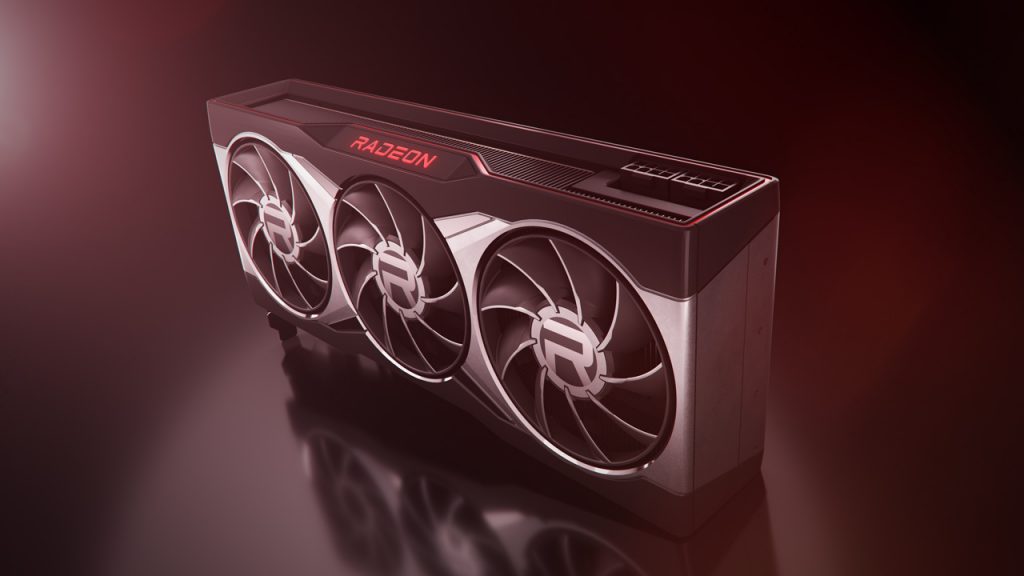 ระบบนิเวศด้านเกมและความร่วมมือที่แข็งแกร่ง
ระบบนิเวศด้านเกมและความร่วมมือที่แข็งแกร่ง
อีกไม่กี่สัปดาห์ข้างหน้า AMD จะเปิดเผยวิดีโอจากเหล่าพันธมิตร ISV เพื่อนำเสนอประสบการณ์การเล่นเกมอันน่าทึ่ง ด้วยขุมพลังกราฟิกการ์ด AMD Radeon™ RX 6000 Series ในเกมต่าง ๆ ที่เกมเมอร์ทั่วโลกรอคอยมากที่สุดในปีนี้ตามรายละเอียดด้านล่าง สามารถติดตามชมได้ผ่านทางเว็บไซต์ AMD
- DIRT® 5 – October 29
- Godfall™ – November 2
- World of Warcraft®: Shadowlands – November 10
- RiftBreaker™ – November 12
- FarCry® 6 – November 17
ราคาและการวางจำหน่าย
กราฟิกการ์ด AMD Radeon™ RX 6800 และ Radeon™ RX 6800 XT คาดว่าจะวางจำหน่ายในวันที่ 18 พฤศจิกายนนี้ ผ่านทางร้านค่าตัวแทนจำหน่ายทั่วโลก และบนเว็บไซต์ AMD.com ในราคา $579 เหรียญสหรัฐฯ และ $649 เหรียญสหรัฐฯ ตามลำดับ และกราฟิกการ์ด AMD Radeon™ RX 6900 XT คาดว่าจะวางจำหน่ายวันที่ 8 ธันวาคมนี้ ราคา $999 เหรียญสหรัฐฯ
นอกจากนี้คาดว่ากราฟิกการ์ด AMD Radeon™ RX 6800 และ RX 6800 XT จะมีวางจำหน่ายกับพันธมิตรของ AMD ประกอบด้วย ASRock, ASUS, Gigabyte, MSI, PowerColor, SAPPHIRE และ XFX โดยจะเริ่มวางจำหน่ายในเดือนพฤศจิกายนนี้
Supporting Resources
- Lean more about the AMD Radeon™ RX 6000 Series here
- Learn more about AMD RDNA™ 2 graphics architecture here
- Learn more about the AMD Radeon™ Software here
- Learn more about AMD Ryzen™ 5000 Series here
- Become a fan of AMD on Facebook
- Follow AMD on Twitter
เกี่ยวกับ AMD
เป็นเวลากว่า 50 ปีที่ AMD ขับเคลื่อนให้เกิดนวัตกรรมที่มีประสิทธิภาพสูงทั้งในส่วนของการประมวลผลกราฟิก และเทคโนโลยีเวอร์ชวลไลเซชั่นต่าง ๆ ซึ่งเป็นส่วนสำคัญสำหรับวงการเกม เป็นแพลตฟอร์มระดับมืออาชีพ และเป็นศูนย์กลางข้อมูล ผู้บริโภคหลายร้อยล้านคน องค์กรธุรกิจชั้นนำที่จัดอยู่ในกลุ่ม Fortune 500 และหน่วยงานวิจัยทางวิทยาศาสตร์สมัยใหม่ทั่วโลก ต่างใช้เทคโนโลยีของ AMD เพื่อการพัฒนาศักยภาพด้านต่าง ๆ ไม่ว่าจะเป็น การใช้ชีวิต การทำงาน และความบันเทิง พนักงานของ AMD ทุกคนทั่วโลกล้วนมุ่งพัฒนาผลิตภัณฑ์ใหม่ ๆ ที่จะก้าวข้ามขอบเขตของข้อจำกัดทั้งหลาย ท่านสามารถดูข้อมูลเพิ่มเติมเกี่ยวกับ AMD (NASDAQ: AMD) และกระบวนการสร้างสรรค์ต่าง ๆ ที่เราทำในปัจจุบันและที่กำลังจะเกิดขึ้นในอนาคตได้ที่เว็บไซต์ website, blog, Facebook และ Twitter
CAUTIONARY STATEMENT
This press release contains forward-looking statements concerning Advanced Micro Devices, Inc. (AMD) such as the features, functionality, performance, availability, timing and expected benefits of AMD products including the AMD RadeonTM RX 6000 Series graphics cards, which are made pursuant to the Safe Harbor provisions of the Private Securities Litigation Reform Act of 1995. Forward looking statements are commonly identified by words such as “would,” “may,” “expects,” “believes,” “plans,” “intends,” “projects” and other terms with similar meaning. Investors are cautioned that the forward-looking statements in this press release are based on current beliefs, assumptions and expectations, speak only as of the date of this press release and involve risks and uncertainties that could cause actual results to differ materially from current expectations. Such statements are subject to certain known and unknown risks and uncertainties, many of which are difficult to predict and generally beyond AMD’s control, that could cause actual results and other future events to differ materially from those expressed in, or implied or projected by, the forward-looking information and statements. Material factors that could cause actual results to differ materially from current expectations include, without limitation, the following: Intel Corporation’s dominance of the microprocessor market and its aggressive business practices; the ability of third party manufacturers to manufacture AMD’s products on a timely basis in sufficient quantities and using competitive technologies; expected manufacturing yields for AMD’s products; the availability of essential equipment, materials or manufacturing processes; AMD’s ability to introduce products on a timely basis with features and performance levels that provide value to its customers; global economic uncertainty; the loss of a significant customer; AMD’s ability to generate revenue from its semi-custom SoC products; the impact of the COVID-19 pandemic on AMD’s business, financial condition and results of operations; political, legal, economic risks and natural disasters; the impact of government actions and regulations such as export administration regulations, tariffs and trade protection measures; the impact of acquisitions, joint ventures and/or investments on AMD’s business; potential security vulnerabilities; potential IT outages, data loss, data breaches and cyber-attacks; uncertainties involving the ordering and shipment of AMD’s products; quarterly and seasonal sales patterns; the restrictions imposed by agreements governing AMD’s notes and the revolving credit facility; the competitive markets in which AMD’s products are sold; market conditions of the industries in which AMD products are sold; AMD’s reliance on third-party intellectual property to design and introduce new products in a timely manner; AMD’s reliance on third-party companies for the design, manufacture and supply of motherboards, software and other computer platform components; AMD’s reliance on Microsoft Corporation and other software vendors’ support to design and develop software to run on AMD’s products; AMD’s reliance on third-party distributors and add-in-board partners; the potential dilutive effect if the 2.125% Convertible Senior Notes due 2026 are converted; future impairments of goodwill and technology license purchases; AMD’s ability to attract and retain qualified personnel; AMD’s ability to generate sufficient revenue and operating cash flow or obtain external financing for research and development or other strategic investments; AMD’s indebtedness; AMD’s ability to generate sufficient cash to service its debt obligations or meet its working capital requirements; AMD’s ability to repurchase its outstanding debt in the event of a change of control; the cyclical nature of the semiconductor industry; the impact of modification or interruption of AMD’s internal business processes and information systems; compatibility of AMD’s products with some or all industry-standard software and hardware; costs related to defective products; the efficiency of AMD’s supply chain; AMD’s ability to rely on third party supply-chain logistics functions; AMD’s stock price volatility; worldwide political conditions; unfavorable currency exchange rate fluctuations; AMD’s ability to effectively control the sales of its products on the gray market; AMD’s ability to adequately protect its technology or other intellectual property; current and future claims and litigation; potential tax liabilities; and the impact of environmental laws, conflict minerals-related provisions and other laws or regulations. Investors are urged to review in detail the risks and uncertainties in AMD’s Securities and Exchange Commission filings, including but not limited to AMD’s Quarterly Report on Form 10-Q for the quarter ended September 26, 2020.
©2020 Advanced Micro Devices, Inc. All rights reserved. AMD, the AMD Arrow logo, Radeon, FreeSync, and combinations thereof are trademarks of Advanced Micro Devices, Inc. DirectX is a registered trademark of Microsoft Corporation in the US and other jurisdictions. Other product names used in this publication are for identification purposes only and may be trademarks of their respective companies.
The information contained herein is for informational purposes only, and is subject to change without notice. Timelines, roadmaps, and/or product release dates shown in this Press Release are plans only and subject to change. “Navi” is an AMD codename and is not a product name.
[1] Testing done by AMD performance labs October 20 2020 on a Radeon RX 6900 XT and Radeon RX 5700 XT (20.45-201013n driver), AMD Ryzen 9 5900X (3.70GHz) CPU, 16GB DDR4-3200MHz, Engineering AM4 motherboard, Win10 Pro 64. The Following games were tested at 4k at max settings: Battlefield V DX11, Doom Eternal Vulkan, Forza DX12, Resident Evil 3 DX11, Shadow of the Tomb Raider DX12. Performance may vary. RX-558
[2] RX-549 – Testing done by AMD performance labs 10/16/20, using Assassins Creed Odyssey (DX11, Ultra), Battlefield V (DX12, Ultra), Borderlands 3 (DX12, Ultra), Control (DX12, High), Death Stranding (DX12 Ultra), Division 2 (DX12, Ultra), F1 2020 (DX12, Ultra), Far Cry 5 (DX11, Ultra), Gears of War 5 (DX12, Ultra), Hitman 2 (DX12, Ultra), Horizon Zero Dawn (DX12, Ultra), Metro Exodus (DX12, Ultra), Resident Evil 3 (DX12, Ultra), Shadow of the Tomb Raider (DX12, Highest), Strange Brigade (DX12, Ultra), Total War Three Kingdoms (DX11, Ultra), Witcher 3 (DX11, Ultra no HairWorks) at 4K. System comprised of a Radeon RX 6800 XT with AMD Radeon Graphics driver 27.20.12031.1000 and an Radeon RX 5700 XT with AMD Radeon Graphics driver 26.20.13001.9005. Performance may vary. RX-549
[3] AMD internal modeling based on the average CAC of 33 apps tested on the RX 5700 XT and RX 6900 XT divided by the number of active compute units 40 and 80, respectively. Performance will vary. RX-543
[4] AMD internal modeling based on graphics-engine-only measured average gaming power consumption and 3DMark11 power consumption vs. frequency for RX5700 XT and RX 6900 XT divided by the number of compute units (40 and 80 respectively). RX-536
[5] Measurement calculated by AMD engineering, on a Radeon RX 6000 series card with 128 MB AMD Infinity Cache and 256-bit GDDR6. Measuring 4k gaming average AMD Infinity Cache hit rates of 58% across top gaming titles, multiplied by theoretical peak bandwidth from the 16 64B AMD Infinity Fabric channels connecting the Cache to the Graphics Engine at boost frequency of up to 1.94 GHz. RX-547
[6] Based on internal modeling and testing done by AMD engineering labs 10/5/2020 on Radeon RX 6800 XT with 128 MB of AMD Infinity Cache vs a Radeon RX 5700 XT graphics card measuring memory latency. Performance may vary. RX-564
[7] Based on internal modeling and testing done by AMD engineering labs 10/5/2020 on a Radeon RX 6800 XT vs an Radeon RX 5700 XT, using measurements taken of Cac, frequency at same power uplifts, and AMD Infinity Cache uplifts. Performance may vary. RX-566
[8] AMD Smart Access Memory is only supported on AMD Radeon RX 6000 series graphics cards. Not validated on any other graphics solutions. GD-178.
[9] Testing done by AMD performance labs October 18 2020 on Radeon RX 6800 XT (20.45-201013n driver), RTX 3080 (driver 456.71), AMD Ryzen 9 5900X (3.70GHz) CPU, 16GB DDR4-3200MHz, Engineering AM4 motherboard, Win10 Pro 64. The following games were tested at 4k at max settings with RAGE MODE + SMART ACCESS MEMORY enabled and disabled: Borderlands 3, best API Ultra; Doom Eternal, Vulkan Ultra Nightmare; Forza Horizon 4, DX 12 Ultra; Gears 5, DX12 Ultra; Hitman 2, DX12 Ultra; Resident Evil 3, best API, Ultra; Wolfenstein: Young Blood, Vulkan Mein Leben. Performance may vary. RX-559
[10] Radeon™ Anti-Lag is compatible with DirectX 9 and DirectX 11 APIs, Windows 7 and 10. Hardware compatibility includes GCN and newer consumer dGPUs Ryzen 2000 and newer APUs, including hybrid and detachable graphics configurations. No mGPU support GD-157
[11] Game clock is the expected GPU clock when running typical gaming applications, set to typical TGP (Total Graphics Power). Actual individual game clock results may vary. GD-147
[12] Boost Clock Frequency is the maximum frequency achievable on the GPU running a bursty workload. Boost clock achievability, frequency, and sustainability will vary based on several factors, including but not limited to: thermal conditions and variation in applications and workloads. GD-151


